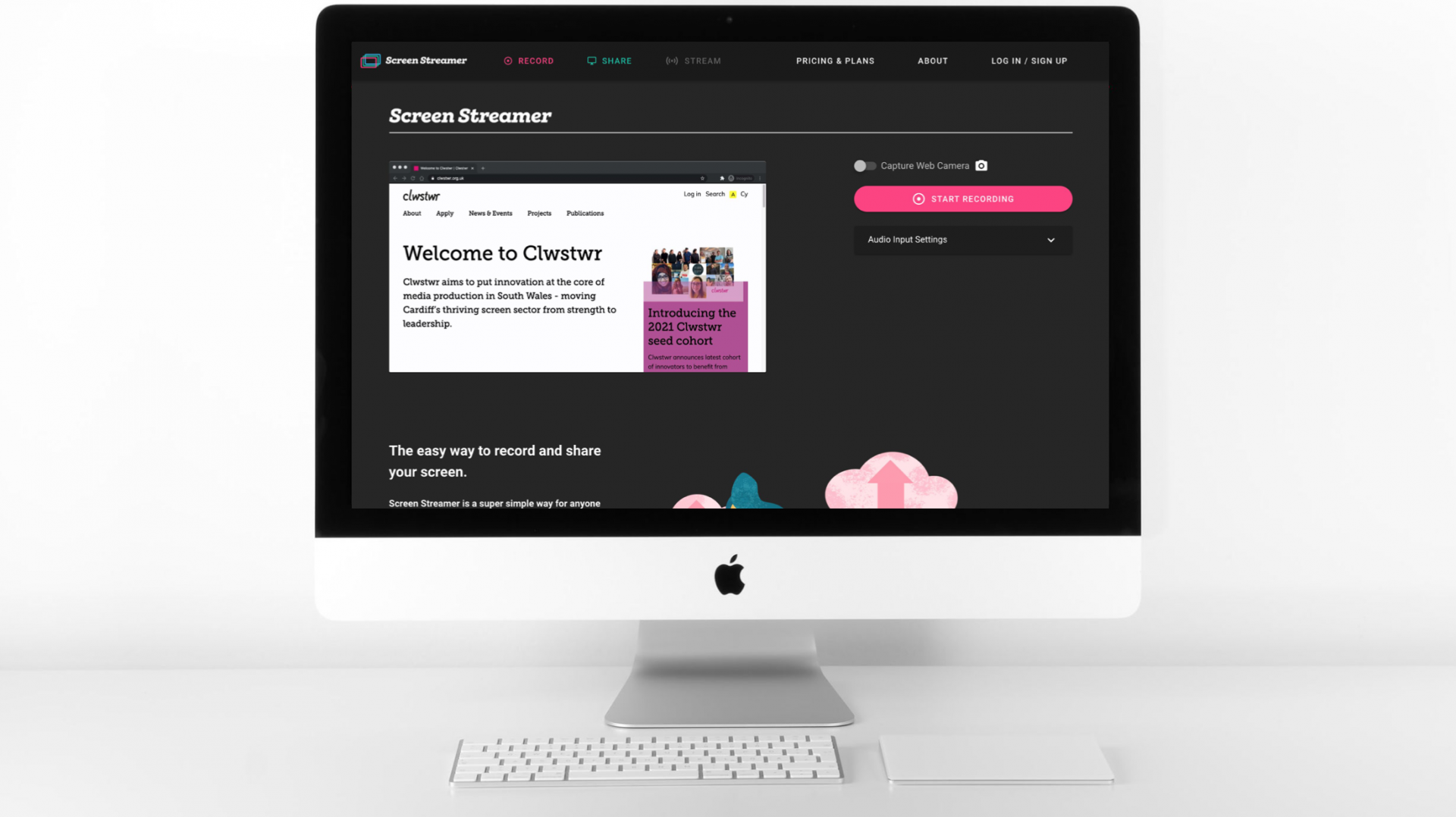About Screen Streamer
Screen Streamer is an online tool that allows anyone to record and share their screen using a web browser. It is the brainchild of four friends and colleagues based in Wales with backgrounds in software engineering and web development.

Clunky systems showed us the need for something like Screen Streamer.
Our experiences of working in technical software support jobs, especially from remote locations, have shown us how frustrating it can be for those needing our help. Many people struggle to explain the technical problem they’re having. Those who are more tech-savvy might record their screen, save the video then upload it to YouTube for us to watch via a link, but this is a laborious task. It’s also hard for us to explain solutions to people requiring technical support, as opposed to demonstrating what they need to do.
We had an idea to make a simple tool via the web for screen recording and sharing, with the hope that it would help us in our support roles and people in similar lines of work. In our spare time, we worked on that idea to make an early prototype, but struggled to find the hours to push it forward. When the pandemic hit last year, which changed our work schedules a lot, we decided to look at ways we could take the idea further.
At first, we didn’t know if we’d be eligible for Clwstwr funding.
At the time I came across Clwstwr online, it seemed to lean towards creatives and media as opposed to tech. That said, because we were doing stuff with recording media, screens and things like that, we decided to apply. Luckily, we were successful.
Our business was at a very early stage when we received our funding.
In some ways, we didn't really have a business when we applied; we just had an idea for a project that we'd had some progress with. We weren't operational as such, more explorative. Because we were fairly new and wanted to do some experimenting, we received seed funding.
The validation that came with the funding prompted us to formally create the business.
One of the first things we realised was that we should formalise things to facilitate R&D. There are four of us on the team. At the time that we got the funding, some of us were freelancing, some of us were working almost full time, some of us were setting up another company as a day job... we needed to neaten up that side of things!
To give us direction, we developed a menu of things that we wanted to look into.
We were early on with a lot of things on the tech innovation side of things, so we spent time putting together a list of things to research and develop, identified some targets and constructed a Gantt chart. Among other things, we wanted to look at feasibility, proof of concept, proof of market, proof of product and proof of prototype. At the same time, we were learning how the Clwstwr programme worked, what resources we might get from it and how those useful resources and meetings might fit into our broader project development roadmap. We ended up splitting our efforts between workshops, meetings, introductions and hands-on R&D.
There were a number of technical things that we were really keen to explore.
As we were recording media, we needed to look into things like machine learning and how to create filters to only allow appropriate content. In terms of the functionality, we wanted to add features that would allow people to share private recordings, which led us to look into various aspects around digital storage. The interface needed a design overhaul from an aesthetic point of view, so we hired a freelance designer to come up with visuals and produce something much more sympathetic in that regard.
We had really useful conversations about the legal side of screen recording and sharing.
Clwstwr introduced us to a lawyer who had a lot of knowledge around the areas we were looking at. They made some suggestions regarding what we should be aware of. For example, they told us about a potential requirement for us to register with Ofcom. We came away with a list of legal-related things that we needed to research and put in place in order to take the product forward.
We were very keen to explore who our potential end users might be.
We’d long struggled to define exactly who our end users would be, largely because there seemed to be a number of industries that could benefit from our product. One potential market was education; for this, Clwstwr introduced us to some design students at Cardiff Met so that we could run some beta tests with them. We also looked into the creative sector as a potential market. For this, we worked with someone who does photography and music, pooling ideas on the kinds of features that would be beneficial to people recording musical content. We’re still not completely sure about who our end users are going to be, so we plan to think about it further.
The funding helped us explore our idea further, develop the product and improve usability.
At best, we had an alpha version this time last year. It was a ropey prototype, really! What we have achieved and produced since then through Clwstwr is something that is presentable, marketable and usable in the public domain for free for baseline use cases. We had the opportunity to invest proper time and money into Screen Streamer, which meant we could take it from a proof of concept prototype to a public beta. With our product, you can now just fire up the browser tab, click record, click upload and then share it with someone. It's something we could build on, drive forward, commercialise and add more features to.
Now that it’s up and running, we want to refine our product and business model.
The initial R&D allowed us to validate the concept and prove it to be something demonstrably usable and valuable. We now need more time and funding to figure out who it is of value to and how to commercialise that opportunity. The next stage would be to take the public beta down to further develop it with an identified end user in mind. So, we need to hone in on who that user is and consider how we make it a commercial product. I’d like to look at the possibility of rolling out paid subscriptions or building in optional, paid-for, add-on features that improve value and justify why we charge for the service.
If we hadn't had help from Clwstwr, we wouldn't be where we are today. Our idea could have fizzled out or maybe morphed into something completely different. Screen Streamer is still a part-time/ spare time job for some of us. Hopefully, we can acquire more funding to give us the ability to dedicate more time to it.

